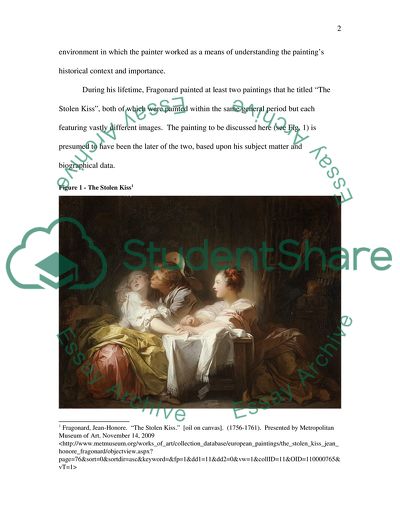Cite this document
(The Stolen Kiss by Fragonard Essay Example | Topics and Well Written Essays - 2000 words, n.d.)
The Stolen Kiss by Fragonard Essay Example | Topics and Well Written Essays - 2000 words. https://studentshare.org/visual-arts-film-studies/1729630-art-history-research-paper-fragonard-the-stolen-kiss
The Stolen Kiss by Fragonard Essay Example | Topics and Well Written Essays - 2000 words. https://studentshare.org/visual-arts-film-studies/1729630-art-history-research-paper-fragonard-the-stolen-kiss
(The Stolen Kiss by Fragonard Essay Example | Topics and Well Written Essays - 2000 Words)
The Stolen Kiss by Fragonard Essay Example | Topics and Well Written Essays - 2000 Words. https://studentshare.org/visual-arts-film-studies/1729630-art-history-research-paper-fragonard-the-stolen-kiss.
The Stolen Kiss by Fragonard Essay Example | Topics and Well Written Essays - 2000 Words. https://studentshare.org/visual-arts-film-studies/1729630-art-history-research-paper-fragonard-the-stolen-kiss.
“The Stolen Kiss by Fragonard Essay Example | Topics and Well Written Essays - 2000 Words”. https://studentshare.org/visual-arts-film-studies/1729630-art-history-research-paper-fragonard-the-stolen-kiss.


